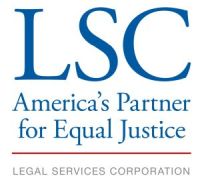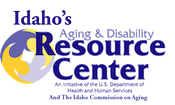Filter your results
Results 11 - 20 of 23. To narrow results enter search keywords or select filters.
It is not unusual for debtors, specifically married debtors who file for bankruptcy protection separately, to co-own property. If you co-own property and intend to file for bankruptcy, you need to be aware that the trustee has the authority to force a sale of the entire asset including the co-owner(s) interest...
A Chapter 13 Bankruptcy is also called a wage earner’s Plan. It enables individuals with regular income to develop a plan to repay all or part of their debts. Under this chapter, debtors propose a repayment plan to make installments to creditors over three to five years. If the Debtor ‘s current monthly income is less than the applicable state median, the plan will be for three years unless the court approves a longer period “for Cause .” If the debtor’s current monthly income is greater than the applicable state median, the plan generally must be for five years.
Social Security income is a lifeline for most seniors. Because it is considered so essential for survival, it has traditionally been protected from attachment by creditors. However, there are some exceptions.
Please review the guide below for more information.
To heighten awareness about lead poisoning prevention, the U.S. Environmental Protection Agency (EPA) has developed Lead in Your Home: A Parent's Reference Guide. The Agency believes this is an essential resource for anyonefrom owners to tenantsconcerned about the dangers of lead in their home and environment. This Guidebook provides Agency recommendations on how you can reduce your familys risk of lead exposure and prevent lead poisoning, ranging from simple steps you can do now to more rigorous procedures that will permanently get rid of lead hazards in your home.
Do you renovate, repair or paint homes or child-occupied facilities built before 1978? If so, you need to know how to work safely with lead-based paint. This guide is designed to help plan for and complete a home renovation, repair or painting
project using lead safe work practices. Lead safe work practices are a group of techniques that reduce the amount of dust produced by renovation activities. When used correctly, they make the work area safer for workers and the home
safe for residents when renovation is complete.
This pamphlet is for you if you:
Reside in a home built before 1978.
Own or Operate a child care facility, including preschools and kindergarten classrooms, built before 1978, or
Have a child under six years of age who attends a child care facility built before 1978.
You will learn:
Did you know that many homes built before 1978 have lead-based paint? Lead from paint, chips, and dust can pose serious health hazards.
Read this entire brochure to learn:
How lead gets into the body
About health effects of lead
What you can do to protect your family
Where to go for more information
This brochure details what to expect during a chapter 7 or chapter 13 bankruptcy case.
If you need help with an SSI or SSDI overpayment issue, you can complete a form asking Social Security to waive repayment or lower the rate of repayment of the overpayment. For more information and a self-guided tool, please visit the Suffolk Lit Lab's website here:
https://apps.suffolklitlab.org/run/ssioverpayment/#/1
The Suffolk Lit Lab has developed a form to help people on SSI or SSDI create a letter to report changes to Social Security that might affect their benefits and to avoid any possible overpayments. For more information, visit their website here: https://apps.suffolklitlab.org/run/ssareportchangesletter/#/1
Pagination
Close
Filter your results
Type
Topics
Tags
Our Partners
LSC's support for this website is limited to those activities that are consistent with LSC restrictions.

